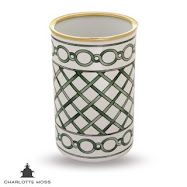A short walk
and a fête
My hometown
Iași is in the North East of Romania. Look on the map Eastern Europe. Quite
unknown, is an European town, the last one to the European Union border. It
isn’t a metropolis : 300,000 inhabitants, with a first known document attesting
the town before year 1400. It is all about history. And culture. We have the
first Romanian university, but now they multiplied and the town has a youth
vibe we miss during the summer.
I give you a
chance to have a taste of this Iasi I know and love and I take you on a short
walk along one street, named after an important Voevod (meaning he ruled the
country), Stephen the Great.
So it begins in front of the hotel build by the French architect Gustave Eiffel. Yes, the
same as the tower, but built 7 years earlier, in 1882. And as the Americans
know already, Eiffel did the interior
structural elements of the Statue of Liberty. Small world, isn’t it? Traian
Hotel is a neoclassical masterpiece and to add more
charm to the place, an urban legend says that Greta Garbo stayed here in 1934
with a lover.
And some old photos show how it changed in time.
1890
1906
1942
And if you don’t know or you don’t remember that Romania
was a communist country, here it is a photo from 1977 to show a piece of this.
On the building you can see the portrait of Nicolae Ceausescu, the head of the Romanian Communist Party and
the Conducator of the country. On the balcony, the speakers, for celebrating in September 1977 the opening
of scholar year. Between them, the man himself, Nicolae Ceausescu and the
general secretary of the Romanian Communist Party for Iasi County,meaning that he practically
ruled it, Ion Iliescu, whom will be the
first democratic president of Romania
after December 1989.
But let’s enjoy the walk and don’t enter in the politics.
The golden rule for a good party is not to talk about religion, politics and
money. So, we look along the street
and at the other end of the
street, the Palace of Culture, which just have been restored and has some
museums inside. But a visit there maybe another time.
This building is from the early 20th
century, as the old palace burned several times along centuries, the last
terrible one was in 1880.
But you must see the changes outside the palace and how
history is more present you’ll think.
A peaceful place, with Germans in town
and cars were requisitioned for the Army and no fuel for civilians.
Next year the scenery changes
But the Romanians are survivors , when they
survive, and they are looking for beauty
in life. You’ll see flowers everywhere and a celebration for life wherever you
look. The enjoy walk includes a short
stop to my favorite florist Darlington. It gave me a pink mood, as you can see.
Passing in
front of the National Theater, build by two Viennese architects, Ferdinand
Fellner and Hermann Helmer, at the end of the 19th century after the
old theater burned
And I can
saw you an history in images. So, we start with 1900 and how it looked brand
new. Look also at the people in the following images. Fashion changes and so
does the transport.
Next building
is an old palace transformed in the City Hall. It was built by the architect Johann Freywald between
1800-1816, and after the fire destroyed it
in 1827, rebuild between 1831. The owner was the Rosetti-Roznovanu family.
In the second half of the 19th century a famous love story marked
the place. The beautiful and cultivated bachelor Nicolae Rosetti-Roznovanu fall in love with
Maria, married to a powerful old boyard. The son from a previous marriage of the
husband fight and died for the honor of
the family. After the bloody episode the two lovers could marry, not without
difficulties from the head of the Orthodox Church whom had the place just
across the street!
They sold
the building to the Mayor in 1891, and the palace was used as a Regal residence, and in the World
War I as hospital and for the Government, as Romania was partly occupied by
Germans and the capital was moved to Iasi.
Across the
street, the Mitropolia, where the Mitropolit lives and preys since ever. The
Mitropolit is the head of the Orthodox Church for the entire province.
Mitropolia is a place of pilgrimage for Christians as Saint Parascheva is here.
You can see
the actual Church which is a Cathedral and on the left, the building housing
the Mitropolit.
You can see
the Stephan the Great street. The Mitropolia and, near us, a jewel of architecture, Thei Ierarhi, monastery
build in the middle of the 17th century. The photos was taken in
1944. WWII, Germans.
But we
return to the enjoy walk of this day. And I stop in front of something you
all will recognize as I think we all have the sin of good chocolate, exceptional
Belgian one in this case.
In my hometown (you can find it as Jassy or
Iassy) Leonidas celebrates two years.
The party was a joy for children and grown ups, with clowns, actors
and…chocolate. Exceptionally for the event a ganache with a nut on top.
I invite you
all to visit the place, there are so many things, places and people to
discover. Enjoy!



















































































































